The latest addition to public transport in London is the Elizabeth Line. Officially launched on the 24th of May 2022, this new line stretches more than 100 km across London.
According to Transport for London (TfL), this railway is estimated to provide 10% additional capacity to Central London’s rail network and boost the UK economy with roughly £42 billion.
The Elizabeth Line is a distinct purple on the line map. Stretching more than 100 km, the Elizabeth Line services areas including Abbey Wood and Shenfield in the east, travelling through the major economic hubs of Central London to Reading, and Heathrow Airport in the West.
Aside from the Elizabeth line, you might need to transfer to other London public transport for easier travels. Here are London’s other public transportation options as well:
- London Underground
- London Bus
- London Bike Rental
- London Trams
- London DLR
- London Overground
- London Cable Cars
- Driving in London
- Taxis in London
If you plan to travel via the Elizabeth line, use this guide to educate you on everything you need to know about the line.
Contents
What is the Elizabeth Line?
Its first service opened on the 24th of May, 2022. The train lines from Heathrow, Shenfield, and Reading have been connected and have increased the usability of the Elizabeth Line.
The upgrade will lead to reduced journey times and ease of London Underground accessibility.
May 2023 is the final upgrade for the foreseeable future. This upgrade will connect the Elizabeth Line’s separate sections and enable services to operate according to the final timetable.
It will also allow 24 trains an hour to run at peak times between Whitechapel and Paddington.
Once the final upgrade is finished, it will allow an estimated 1.5 million more people to be within a 45-minute commute from major established employment centres such as West End, the City, and Canary Warth.
The Elizabeth Line also offers the latest and greatest when it comes to technological innovation. The fleet of 70 train carts each has a length of more than 200 m and allows up to 1,500 passengers.
The trains will have air conditioning, information screens, energy-saving intelligent lighting, and climate control. They also plan to introduce WI-Fi within the tunnels, yet free WI-FI is already available on the platforms.
The line stations are step-free to have easy access to the platform. It provides spaces specifically for wheelchairs located in the fifth carriage. Moreover, those with luggage will also have a separate area on the train, making the train more spacious.
Elizabeth Line Route and Its Stations
In total, there are eight routes and 41 stations. The eight routes are:
- Abbey Wood – Heathrow Terminal 4
- Abbey Wood – Heathrow Terminal 5
- Abbey Wood – Reading
- Paddington – Heathrow Terminal 4
- Paddington – Heathrow Terminal 5
- Paddington – Reading
- Shenfield – London Liverpool Street
- Shenfield – Paddington
Check the detailed table below for more information about stations found on each route. For more information, refer to the stations, stops & piers page of TfL.
Table of Elizabeth Line Route and Its Stations
| Route | Station |
| Abbey Wood – Heathrow Terminal 2 & 3
– Heathrow Terminal 4 – Heathrow Terminal 5 |
|
| Abbey Wood – Reading |
|
| Paddington – Heathrow Terminal 2 & 3
– Heathrow Terminal 4 – Heathrow Terminal 5 |
|
| Paddington – Reading |
|
| Shenfield – London Liverpool Street |
|
| Shenfield – Paddington |
|
Check out the complete Elizabeth Line Routes and Its Stations with table.
Elizabeth Line Map
Below you can find the Elizabeth Line Map showing all the different stops, stations and piers and what individual zones they are divided into.
If you want more maps or a bigger map view, you can check TfL Tube and Rail Maps here.
(Elizabeth line Map by Kanayoko via Wikimedia Commons)
Elizabeth Line Fares and Payment Cards
Travelling between different London Fare Zones with the Elizabeth Line will vary in cost.
It can be difficult to determine right off the bat, thus, you can use this single fare finder tool to quickly determine what it will cost to travel between the different stations.
If you plan on travelling more than once and want to use a pay-as-you-go payment method, then you can refer to the Caps and Travelcard prices by zone to determine your cost.
This link will also take you to Transport for London’s Tube and rail fares to get the complete list of prices and peak and off-peak times charges.
How to Pay Elizabeth Line Fares
London has a consumer-friendly method of collecting payment. The city of London provides numerous ticket options to decide what payment is the best for you.
For more information on this, you can read it here. Otherwise, you can read the summary of each payment below.
Oyster Card
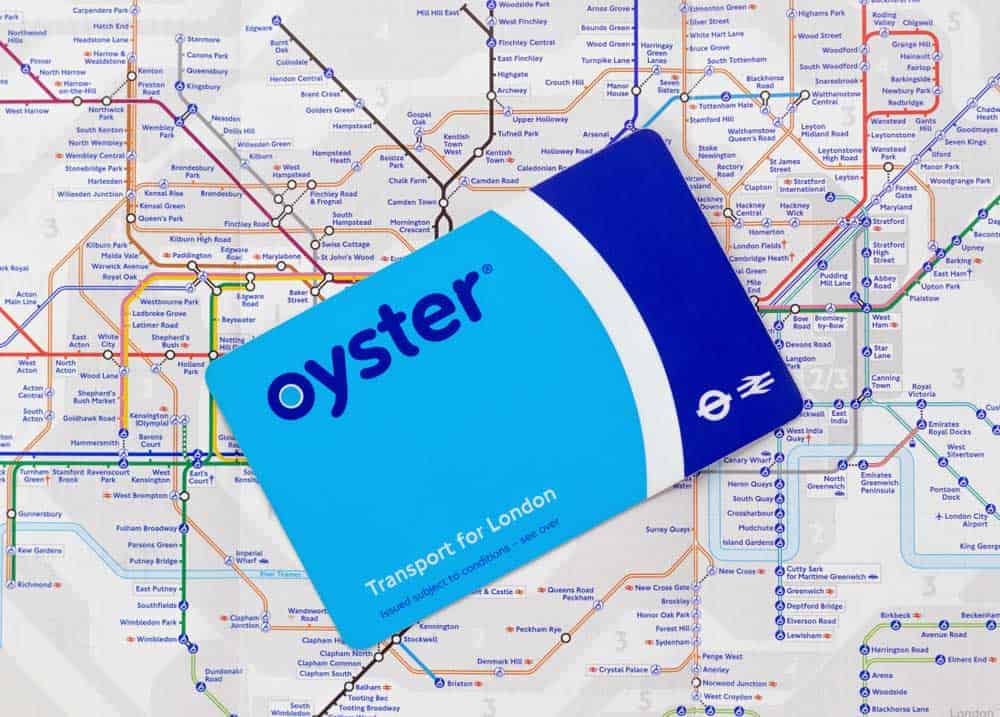
Oyster Card allows you to only pay for the fares of the journeys you make. If you only use it for one day, it will cost you less than a Day Travelcard.
However, oyster cards do not work at stations between Iver and Reading.
Contactless Card

A Contactless Card is similar to an Oyster Card that uses a pay as you go system without the need to top up your payment for journeys.
You will also be able to travel between Reading and Iver as opposed to the oyster card.
Visitor Oyster Card
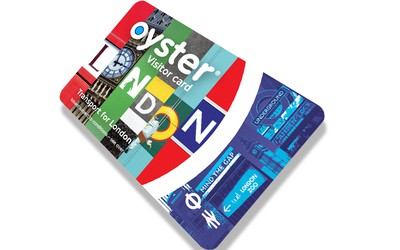
The Visitor Oyster Card is primarily used for visitors visiting London. It can only be purchased outside London, so make sure to get one before arriving.
You get discounts at various shops, restaurants and entertainment centres.
Travelcard
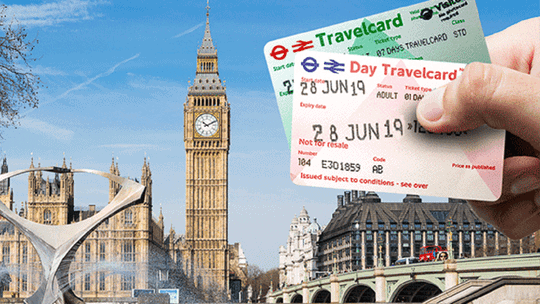
The Travelcard allows you to make unlimited journeys. A Day Travelcard is also available, although more expensive than using pay-as-you-go if you won’t travel and use it multiple times in a day.
You might be overwhelmed by all the payment options available. Fear no more, as here is an excellent article describing what payment option will be the best for you.
You can check it here via Visitor Oyster Card Vs Oyster Card Vs Travel Card Vs Contactless Card.
Below is a detailed table summarising what it will cost to travel between zones based on hours, duration, and type of card.
The rates are for adults; you can get more information on rates for other types of passengers here.
Pay as you go Caps and Travelcard Adult Rates Table
| Zone | Pay-as-you-go caps
(Adult Rate) |
Travelcard (Adult Rate) | ||||||
| Daily Peak | Daily Off-peak | Monday to Sunday | Day Anytime | Day Off-peak | 7 Day | Monthly | Annual | |
| Zones 1 only | £7.70 | £7.70 | £38.40 | £14.40 | £14.40 | £38.40 | £147.50 | £1,536 |
| Zones 1-2 | £7.70 | £7.70 | £38.40 | £14.40 | £14.40 | £38.40 | £147.50 | £1,536 |
| Zones 1-3 | £9.00 | £9.00 | £45.20 | £14.40 | £14.40 | £45.20 | £173.60 | £1,808 |
| Zones 1-4 | £11.00 | £11.00 | £55.20 | £14.40 | £14.40 | £55.20 | £212.00 | £2,208 |
| Zones 1-5 | £13.10 | £13.10 | £65.70 | £20.30 | £14.40 | £65.70 | £252.30 | £2,628 |
| Zones 1-6 | £14.10 | £14.10 | £70.30 | £20.30 | £14.40 | £70.30 | £270.00 | £2,812 |
| Zones 1-7 | £15.30 | £14.10 | £76.50 | £25.70 | £15.30 | £76.50 | £293.80 | £3,060 |
| Zones 1-8 | £18.10 | £14.10 | £90.30 | £25.70 | £15.30 | £90.30 | £346.80 | £3,612 |
| Zones 1-9 | £20.00 | £14.10 | £100.20 | £25.70 | £15.30 | £100.20 | £384.80 | £4,008 |
Elizabeth Line Timetable
The Elizabeth Line has a timetable for a given period, which can change from time to time.
It is crucial to stay up to date on the latest times. Luckily, TfL has created a TfL go app and a plan a journey tool that you can use to plan your journey to ensure you arrive hassle free at your destination.
You can also use this status update tool to check whether your train has a delay or is currently undergoing maintenance.
Famous Attractions Near Elizabeth Line Stations
Listed below are some great attractions just a few minutes away from selected Elizabeth Line stations.
Halcyon Gallery

Nearest Station: Bond Street Station
Address: Mayfair, London W1S 2RL
Phone: +44 (0)20 7499 4508
Email: info@halcyongallery.com
Abbey Wood

Nearest Station: Abbey Wood
Address: 31 Wilton Road, Abbey Wood, SE2 9RH
Crossrail Place Roof Garden
在 Instagram 查看这篇帖子
Nearest Station: Canary Wharf
Address: Canary Wharf Group Plc, One Canada Square, Canary Wharf, E14 5AB
Phone: +44 (0) 20 7418 2000
Frequently Asked Questions
How to touch in and touch out in the Elizabeth line?
For the Elizabeth line, you need to touch in and out on the yellow card reader. If you do not follow this, you may be charged a penalty or the maximum fare.
Can I switch payment methods for touch in and out?
No, use the same method for both touching in and out, e.g. When you touch in using an iPhone, be sure to touch out with the same iPhone and not a smartwatch or Contactless card.
Are there any delays on the Elizabeth Line?
No, the Elizabeth Line is remarkably on time. However, it can be delayed due to maintenance work.
What Do You Think About the Elizabeth Line?
The Elizabeth Line is a much-needed upgrade to the London public transport system.
It provides increased passenger capacity alleviating stress on other transportation systems such as taxis and private cars.
Overall the Elizabeth Line has excellent stations and state-of-the-art train carts making it one of the passenger’s preferred transportation options.
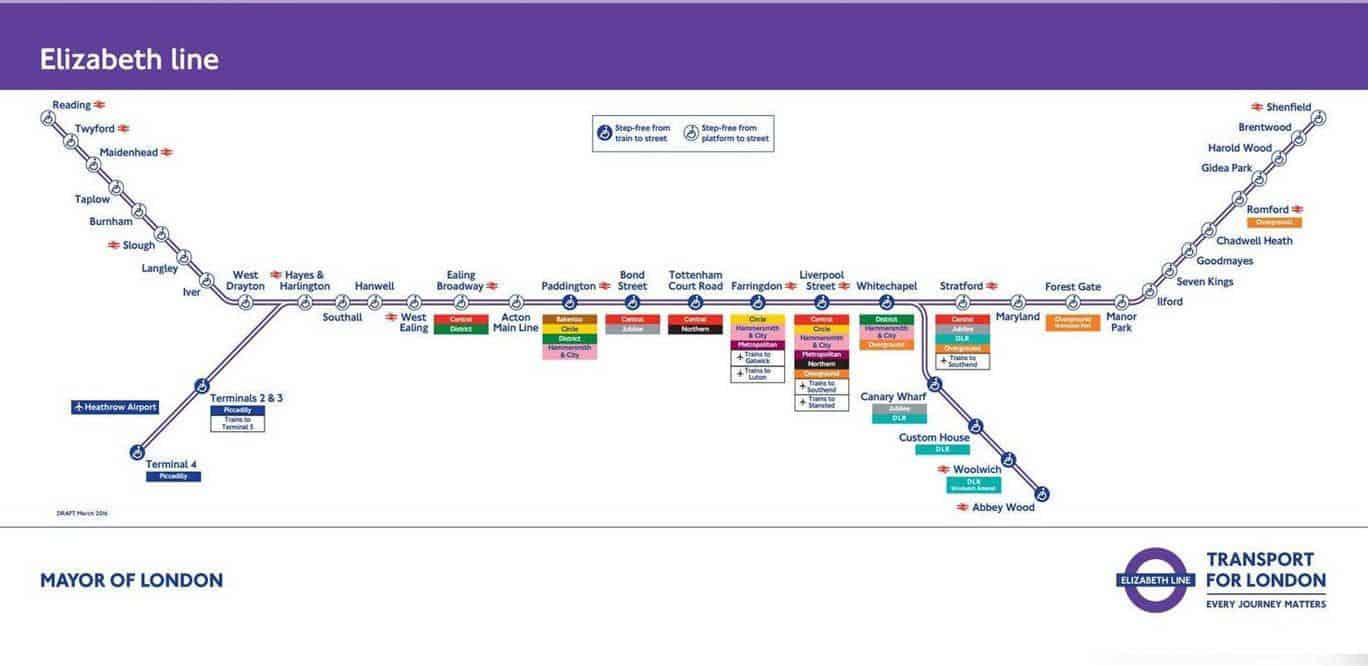

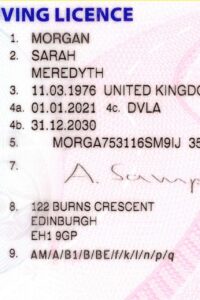
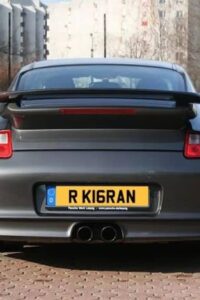

Elizabeth Line Trains Revised Timings w.e.f. 21/05/2023: https://www.ukpocketguide.com/2023/03/elizabeth-line.html